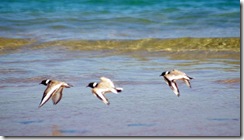 You are invited to a Hooded Plover Workshop coming up on Saturday15th October at the Venus Bay Surf Life Saving Club. Join us to find out more about these quirky, but vulnerable little birds that live on Venus Bay beach and other beaches in Cape Liptrap Coastal Park. The event is part of our Coastcare Victoria Community Grant project to protect Hooded Plovers within Cape Liptrap Coastal Park in partnership with Birds Australia and Parks Victoria
You are invited to a Hooded Plover Workshop coming up on Saturday15th October at the Venus Bay Surf Life Saving Club. Join us to find out more about these quirky, but vulnerable little birds that live on Venus Bay beach and other beaches in Cape Liptrap Coastal Park. The event is part of our Coastcare Victoria Community Grant project to protect Hooded Plovers within Cape Liptrap Coastal Park in partnership with Birds Australia and Parks VictoriaSaturday 15th October
Venus Bay Surf Life Saving Club
Start from 9.30am with opportunity to participate in half or whole day program finishing around 3pm
Morning session presenters: Tanya Pyk from Birds Australia and Jonathon Stevenson from Parks Victoria
Morning Tea and Lunch provided but BYO special dietary requirements.
Please RSVP to Tanya Pyk t.pyk@birdsaustralia.com.au or ph:03 9347 0757

